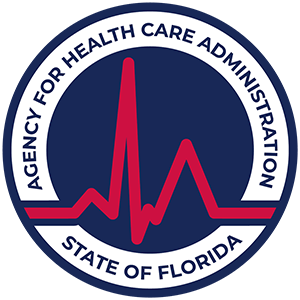Mental Health and Addiction: Navigating the Dual Battle
Navigate the complex world of mental health and addiction, uncover treatment strategies, and challenge stigma.
Understanding Addiction Disorders
When exploring the complex intersection of mental health and addiction, it's crucial to start with a clear understanding of addiction disorders and their potential co-occurrence with other mental health conditions.
Definition and Impact
Substance use disorder (SUD) is a treatable mental disorder that affects a person’s brain and behavior, leading to their inability to control their use of substances like legal or illegal drugs, alcohol, or medications [1]. Symptoms can range from moderate to severe, with addiction being the most severe form of SUD. To understand the distinction between addiction and dependence, visit our article on addiction vs. dependence.
The impact of SUDs is far-reaching, affecting the individual's personal life, relationships, and overall health. Moreover, it can cause significant societal harm, including increased healthcare costs, crime, and lost productivity. For resources on managing and overcoming drug addiction, view our curated list of resources for drug addiction.

Co-Occurring Mental Health Disorders
A significant aspect of addiction disorders is their frequent co-occurrence with other mental health conditions. Individuals with SUD may also have other mental health disorders, such as anxiety disorders, depression, ADHD, bipolar disorder, personality disorders, and schizophrenia [1].
Research suggests that these dual diagnoses can occur together, but one does not necessarily cause the other [1]. This means that each disorder requires its own treatment plan, although these plans may often overlap. For example, behavioral therapies can be effective in treating individuals with both substance use and mental disorders, either alone or in combination with medications [1].
The co-occurrence of mental health disorders and SUDs is not limited to adults. Over 60% of adolescents in community-based substance use disorder treatment programs meet diagnostic criteria for another mental illness. This indicates the importance of early diagnosis and intervention in young populations to prevent the escalation of these disorders into adulthood.
Navigating the dual battle of mental health and addiction can be challenging, but understanding the nature and impact of these disorders is the first step towards recovery. Recognizing the potential for co-occurring disorders can guide more effective and integrated treatment strategies, offering hope for individuals living with these conditions.
Treatment Approaches
When dealing with the dual battle of mental health and addiction, effective treatment is paramount. This typically involves a combination of behavioral therapies and medication options.
Behavioral Therapies
Behavioral therapies have shown promise for treating individuals grappling with co-occurring substance use and mental disorders. According to the National Institute of Mental Health, healthcare providers may recommend behavioral therapies alone or in combination with medications.
Effective behavioral therapies for adults with Substance Use Disorders (SUDs) and co-occurring mental disorders include cognitive-behavioral therapy, contingency management, and motivational enhancement therapy. Each therapy offers unique benefits, and treatment plans may incorporate one or more of these approaches to provide the most effective care.
For instance, cognitive-behavioral therapy helps individuals understand and change thought patterns leading to behavior patterns that may contribute to their substance use disorder. Contingency management encourages individuals to remain sober by providing positive reinforcement when they demonstrate desired behaviors. Motivational enhancement therapy seeks to create internal motivation for change in individuals dealing with addiction disorders.
Medication Options
Medications are another crucial component of comprehensive treatment plans for individuals dealing with mental health and addiction. The National Institute on Drug Abuse notes that effective medications exist for treating opioid, alcohol, and nicotine use disorders and for alleviating the symptoms of many other mental disorders.
In some cases, specific medications may be useful in treating multiple disorders. This is particularly beneficial for individuals dealing with co-occurring disorders, as it allows for streamlined, effective treatment.
Behavioral treatment, whether alone or in combination with medications, is considered a cornerstone to successful long-term outcomes for many individuals with drug use disorders or other mental illnesses.
Navigating through treatment options can be challenging. It's essential for individuals to work closely with their healthcare provider to develop a personalized treatment plan that addresses their unique needs. For more resources on addiction treatment, visit our resources for drug addiction page.
Integrated Treatment Strategies
When it comes to addressing the dual battle of mental health and addiction, integrating treatment strategies has shown promising results.
Benefits of Integrated Treatment
The National Institute on Drug Abuse points out that integrated treatment for comorbid drug use disorder and mental illness has been found to be consistently superior compared with separate treatment of each diagnosis. The integrated approach involves combining therapeutic strategies to enhance interpersonal and coping skills, as well as supporting motivation and functional recovery.
By treating both conditions together, healthcare providers can address the complex interactions between mental health and addiction more effectively. Moreover, integrated treatment can often provide a more holistic approach to an individual's overall health, considering the links between physical health, mental health, and substance abuse. To learn more about the complexities of addiction, read our article on addiction vs. dependence.
Cognitive Behavioral Therapy
Among the various treatment strategies, cognitive behavioral therapy (CBT) has shown significant promise in treating individuals with co-occurring substance use and mental disorders. The National Institute of Mental Health explains that CBT helps individuals understand and change thought patterns that lead to harmful actions, such as substance use.
CBT can be combined with medication treatments, offering a comprehensive approach to managing mental health and addiction. Effective medications exist for treating opioid, alcohol, and nicotine addiction and can also alleviate the symptoms of many other mental disorders. Some medications may be beneficial in treating multiple disorders.
By integrating CBT with medication treatments, healthcare providers can tailor a treatment plan that addresses both the behavioral and physiological aspects of mental health and addiction. This synergistic approach can often lead to improved treatment outcomes and a greater chance of long-term recovery. For additional support and resources, check out our compiled list of resources for drug addiction.
Challenges in Treatment
While strides are continually being made in the field of mental health and addiction, there remain significant challenges in treatment. These include issues with treatment adherence and high dropout rates, particularly in individuals with co-occurring mental health disorders.
Treatment Adherence
Treatment adherence, or the extent to which a patient consistently follows the prescribed treatment regimen, is a crucial component of successful treatment outcomes. However, patients with co-occurring disorders often demonstrate poorer treatment adherence than those without mental illness [3]. This can have a negative impact on their recovery journey, hindering their progress and the effectiveness of treatment.
In particular, patients with schizophrenia and those dealing with nonmedical use of prescription painkillers often struggle with treatment adherence. Around 1 in 4 individuals with serious mental illness also have a substance use disorder, indicating a high prevalence of co-occurring disorders. Research shows that 43 percent of people in treatment for nonmedical use of prescription painkillers have a diagnosis or symptoms of mental health disorders, particularly depression and anxiety.
Dropout Rates
Alongside issues of adherence, dropout rates—patients prematurely leaving treatment—are another significant challenge in treating mental health and addiction. As per National Institute on Drug Abuse, patients with co-occurring disorders have higher rates of treatment dropout than those without mental illness.
This is especially evident among adolescents in substance use disorder treatment programs, with over 60 percent meeting diagnostic criteria for another mental illness. Furthermore, untreated childhood ADHD can increase the later risk of substance use disorders, with studies showing an increased risk for substance use disorders in youth with untreated ADHD.
These challenges highlight the need for integrated and comprehensive treatment strategies that address both mental health and addiction. Understanding the disease model of addiction and the difference between addiction vs. dependence can help in fostering empathy and reducing stigma, which can, in turn, encourage treatment adherence and reduce dropout rates. For additional help and resources, check out our article on resources for drug addiction.
Special Considerations
When dealing with mental health and addiction, there are certain special considerations that need to be taken into account. This includes the treatment for adolescents and preventive interventions that can be put into place.
Treatment for Adolescents
Adolescents present a unique challenge in the treatment of substance use disorders (SUDs) and co-occurring mental illnesses. Over 60 percent of adolescents in community-based SUD treatment programs meet diagnostic criteria for another mental illness, indicating high rates of co-occurring mental illness among youth with SUDs.
SUDs are treatable mental disorders that affect a person's brain and behavior, leading to their inability to control their use of substances like legal or illegal drugs, alcohol, or medications. Symptoms can range from moderate to severe, with addiction being the most severe form of SUD. People with SUD may also have other mental health disorders such as anxiety disorders, depression, ADHD, bipolar disorder, personality disorders, and schizophrenia [1].
Effective medications exist for treating opioid, alcohol, and nicotine use disorders and for alleviating the symptoms of many other disorders. Behavioral treatment, either alone or in combination with medications, is a cornerstone to successful long-term outcomes for many individuals with drug use disorders or other mental illnesses [3].
While these treatments can be effective, it's important to consider the unique needs and circumstances of adolescents. This may involve family-based interventions, school-based interventions, and other community-based efforts. For more information on this topic, check out our article on addiction vs. dependence.
Preventive Interventions
Preventive interventions play a crucial role in reducing the risk of developing substance use disorders and related mental health issues. Early drug use is a strong risk factor for the later development of SUDs and it may also increase the risk of developing other mental illnesses later in life. For example, frequent marijuana use during adolescence can increase the risk of psychosis in adulthood.
Preventive interventions can take many forms, including school-based programs that aim to reduce risk factors and enhance protective factors, family-based programs that improve family functioning and parenting skills, and community programs that provide resources and support for youth and their families.
These preventive interventions, coupled with early detection and treatment, can significantly reduce the impact of substance use disorders and co-occurring mental illnesses on adolescents and their families. For more resources on this topic, check out our article on resources for drug addiction.
Addressing Stigma
One of the significant challenges in treating mental health and addiction disorders is the prevailing stigma attached to these conditions. This stigma can deter individuals from seeking help, hinder their recovery process, and contribute to discrimination and isolation.
Public Perception
Stigmas about mental illness are widely endorsed by the general public in the Western world. Studies indicate that the majority of citizens in the United States and many Western European nations have stigmatizing attitudes about mental illness. Even well-trained professionals from most mental health disciplines subscribe to stereotypes about mental illness.
Public stigma towards mental illness may result in discrimination in various forms, including withholding help, avoidance, coercive treatment, and segregated institutions. For example, more than 40% of a sample agreed that people with schizophrenia should be forced into treatment, and the public endorses segregation in institutions as the best service for people with serious psychiatric disorders.
The perception of addiction is also flawed, often due to misconceptions about the nature of addiction. For more information on this, check out our article on addiction vs. dependence.
Strategies for Reducing Stigma
Addressing the stigma associated with mental health and addiction is crucial for improving the treatment outcomes for those afflicted. Various strategies can be employed to reduce public stigma, including protest, education, and contact.
Education programs on mental illness have been shown to lead to improved attitudes about persons with mental illness. Similarly, providing opportunities for the public to meet persons with severe mental illness may help reduce stigma. It's important to promote a better understanding of the disease model of addiction to help reshape public perception.
Structural stigma in the U.S. health care system contributes to disparities in funding for research and treatment of mental disorders compared to physical disorders. Strategies to address structural stigma include legal, policy, advocacy, and professional education approaches aimed at changing discriminatory practices and increasing access to quality treatment.
By addressing stigma, we can create a more inclusive and supportive environment for individuals battling mental health and addiction disorders. For those seeking help, our resources for drug addiction can provide valuable guidance.
References
[1]: https://www.nimh.nih.gov/health/topics/substance-use-and-mental-health
[2]: https://nida.nih.gov/research-topics/co-occurring-disorders-health-conditions
[3]: https://www.nimh.nih.gov/health/topics/substance-use-and-mental-health.














.svg)








